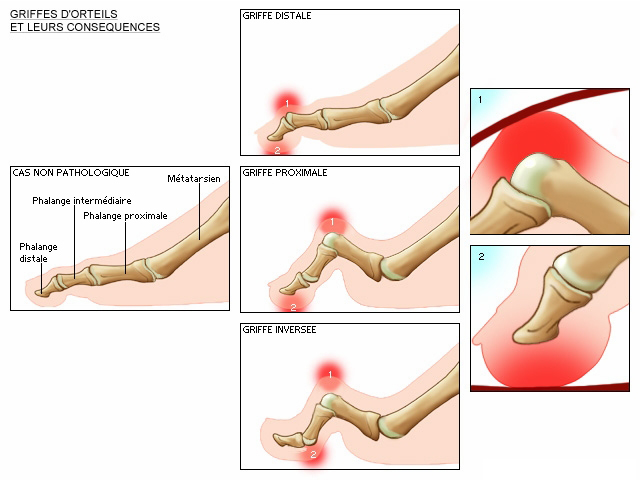The different types of claws
The claw toes are disabling by the shoe’s wearing conflict, generators of corns or callus, sometimes very painful.
The corns are above the arch, the callus below.
In addition, it should be noted that these claw toes increase or cause metatarsalgia (pain under the forefoot) by increasing the support on the corresponding metatarsal head. These corns or callus can therefore be located on all sides of the toe, whether the conflict is between the toes, with the shoes or the floor.
Thus, they consist of thickening of the skin, which corresponds to a form of protection of the organism.
The most common claw toe is on the joint between the first 2 phalanges, pointing downwards, called proximal claw. It causes a dorsal corn. It is called a total claw if the distal phalangeal joint is also directed downwards.
Concerning a distal claw, we speak of a hammer toe (as if the distal phalanx had been hit by a hammer). There is a dorsal corn, but especially a callus, witness of a painful support.
In the case of an inverted claw, we’re talking about a swan-neck deviation. The middle phalanx is quasi-vertical, a dorsal horn is observed on the proximal joint, and a plantar callus is observed on the distal joint.
If the toe deviates from its axis, it may pass above or below the adjacent toe, in this case it is referred to as a supraductus or infraductus toe.

The two evolutionary stages of claw toes
– Initial stage: reducible claw. Deformation is reduced by external manoeuvres. Treatment of the cause is sufficient.
– Advanced stage: non-reducible claw. Deformation is fixed, irreducible, and requires treatment: orthoplasty(external silicone equipment) or surgery.


